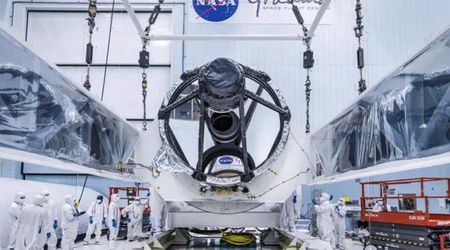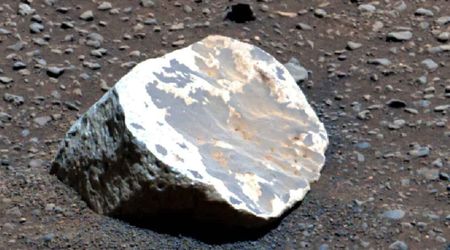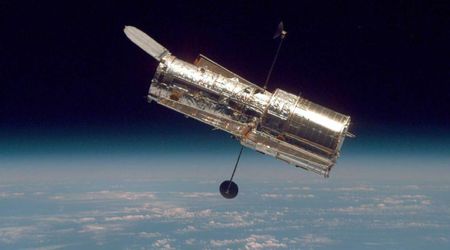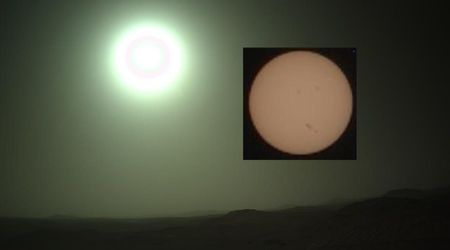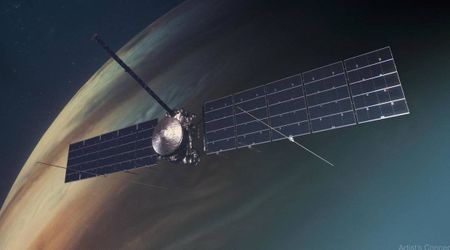ESA's Solar Orbiter provides stunning new footage of solar prominence
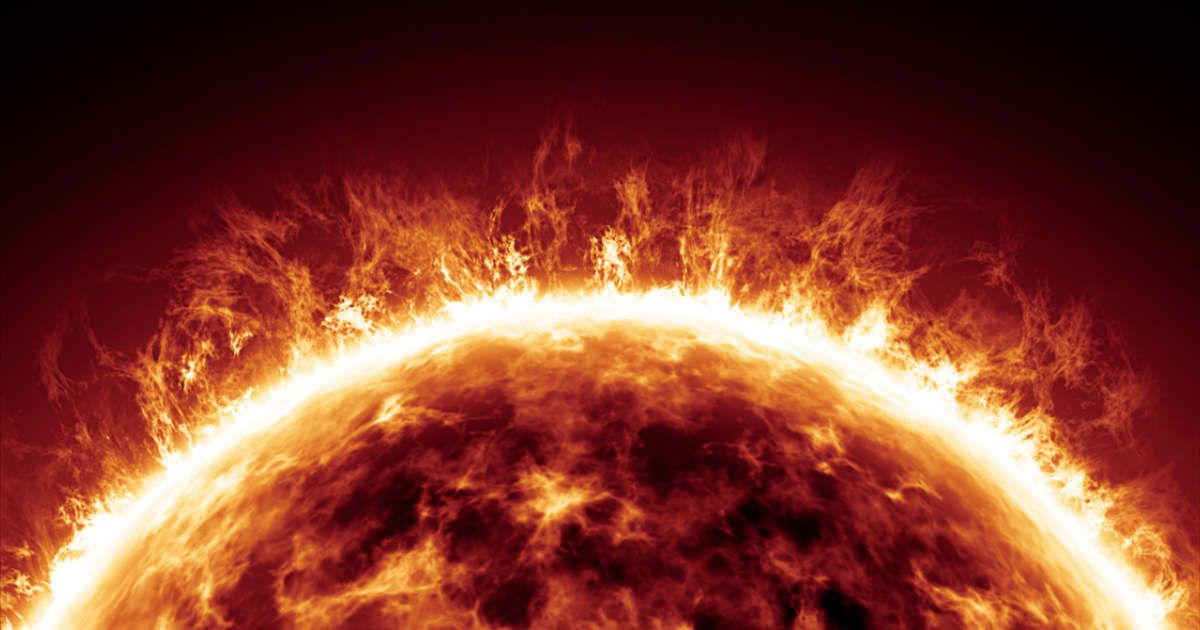
On March 17, 2025, the ESA and NASA's Solar Orbiter observed dark material, called prominence, sticking out from the side of our Sun. The footage, gathered by the Extreme Ultraviolet Imager (EUI) from a distance of 63 million kilometers (around 39 million miles), shows the dense plasma (charged gas) held in place by the Sun’s powerful magnetic field.
Video Credit: ESA & NASA/Solar Orbiter/EUI Team, D. Berghmans (ROB), CC BY-SA 3.0 IGO ; Music: Atmos by Oliver Spencer
The feature appears dark, not because it lacks energy, but because the plasma it contains is cooler than the surroundings, per the ESA. The material inside the prominence is roughly 10,000 °C, while the surrounding plasma's temperature is around a million degrees. When such a structure is viewed against space, it’s known as a prominence, but the same feature seen against the solar surface becomes a filament.

Prominences can reach astonishing distances, tens of thousands of kilometres, sometimes even more than the diameter of our planet and they can remain active for weeks or even months. While it is known that they form over the period of a day or so, scientists are still trying to figure out how they are formed and why some are more stable than others, according to NASA.

Prominences are crucial to understanding space weather, according to Daily Galaxy. That's because they are often followed by coronal mass ejections (CMEs)—huge bursts of solar material that disrupt communication and satellite operations upon reaching Earth. Moreover, prominences can also help in understanding the Sun's complex magnetic field better, since they dance along the field lines and act as natural tracers of solar magnetism.
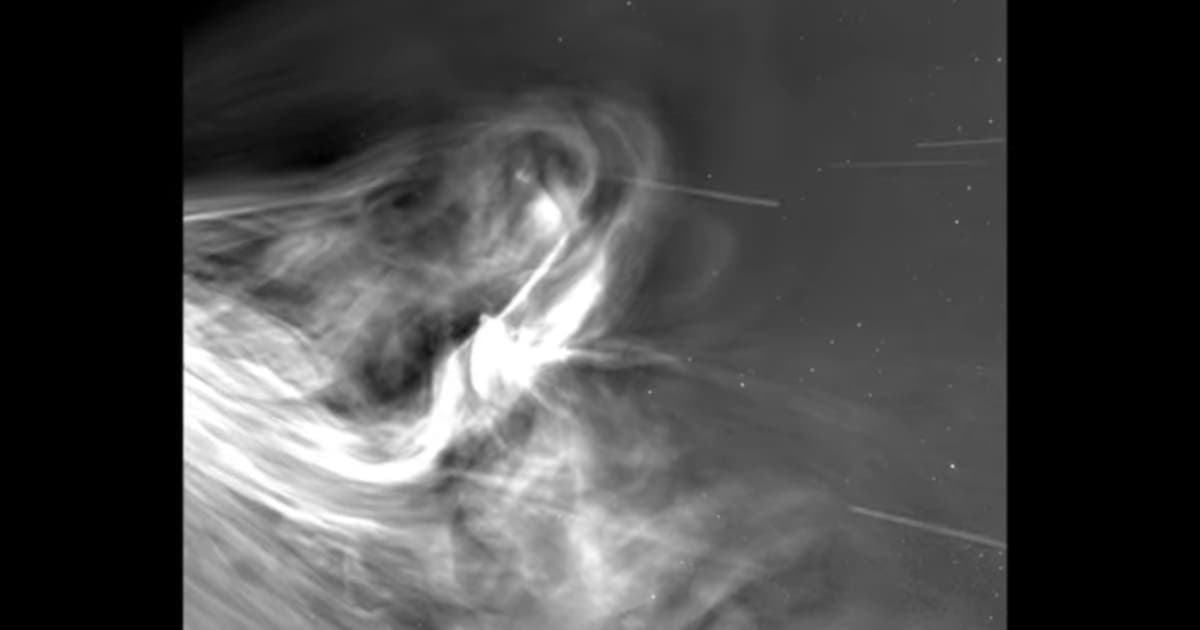
While we are on the topic of CMEs and the Sun's magnetism, it is important to note that another solar mission not too long ago also gave us a good look at them. NASA’s Parker Solar Probe captured images of the Sun from within its atmosphere—the closest view of the star ever recorded. During the record-breaking flyby in late 2024, Parker got within 3.8 million miles of the solar surface, a distance that would have been unthinkable a generation ago. Using the WISPR instrument, Parker captured detailed images of the heliospheric current sheet, where the direction of the solar magnetic field changes, along with images of multiple CME collisions.

Apart from prominences and CMEs, sunspots are also of great interest to scientists studying our star. These dark patches scattered across the Sun’s surface mark areas where magnetic fields have become so twisted and dense that they block some of the heat from rising upward, per NASA. Sunspots are often found in the same areas on the Sun as its active regions from where CMEs and solar flares are typically released. This makes supspots crucial when it comes to tracking solar activity.
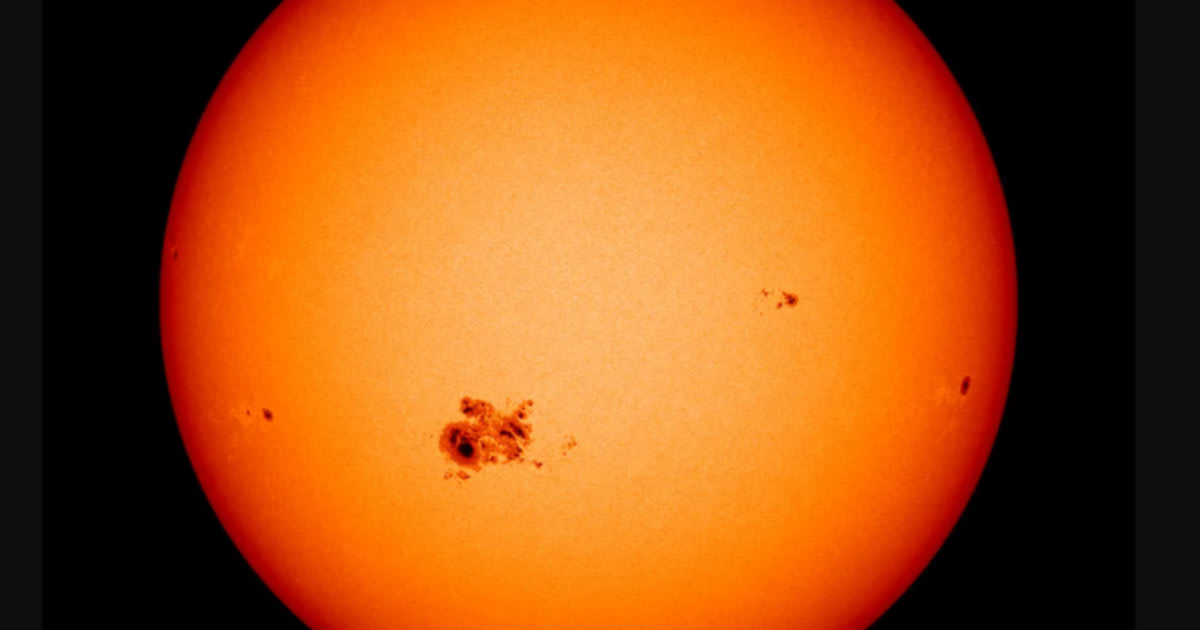
From a single prominence event to the closest-ever images of the Sun, each observation offers new insights into our star. The Sun may be familiar, but it remains full of surprises and spacecraft like Solar Orbiter and Parker Solar Probe are helping us understand the forces that are part of our neighbourhood.
More on Starlust
Astrophotographer achieves 'once in a lifetime' shot of ISS crossing Sun during solar flare eruption
Massive solar flare bursts from the sun cause radio blackouts across parts of North America
